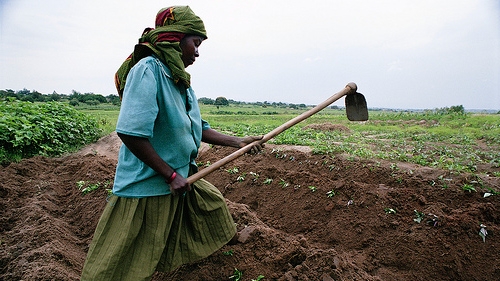Droughts in the United States, continuous rains in Europe, and poor monsoon conditions in India pushed grain commodity prices this month to levels not seen since 2007 and 2008, years when high prices and price volatility touched off a food crisis in developing countries around the world.
Food prices are already high, and the recent crop damage and likelihood that rising commodity prices will translate into even higher food prices over the coming months is raising concerns among aid officials and those working on poverty reduction.
Prices have risen substantially across all the major grains except rice. Wheat prices are up over 50 percent since mid-June; the price for corn has risen more than 45 percent since mid-June; and soybeans are up almost 30 percent since the beginning of June and up almost 60 percent since the end of last year. Global stocks of most of the tradable grains are also lower now than they have been historically.
In the poorest countries, where people already spend up to two-thirds of their daily income on food, rising food prices can become a threat to growth and social stability, as well as health, nutrition and schooling.
“When food prices rise sharply, families cope by pulling their kids out of school and eating cheaper, less nutritious food, which can have catastrophic life-long effects on the social, physical, and mental well being of millions of young people,” said World Bank Group President Jim Kim.
“The World Bank and our partners are monitoring this situation closely so we can help governments put policies in place to help people better cope,” he said.
Crisis response & building resilience
The World Bank Group has several programs in place that already assist client countries with agriculture and agriculture-related investment, policy advice, and fast-track financing for crisis situations.
The Bank’s Global Food Crisis Response Program (GFRP), which launched in 2008 and ran through June 2012, has reached about 40 million people in 47 countries with short- and medium-term food supply response measures, social safety nets, and other funding. From July 2012, the Bank’s emergency response will be channeled through the International Development Association’s Crisis Response Window and the recently approved Immediate Response Mechanism that will provide the basis for emergency assistance in the future.
The Bank also administers the multi-donor Global Agriculture and Food Security Program (GAFSP), which has been lauded as a model for international food security outreach.


